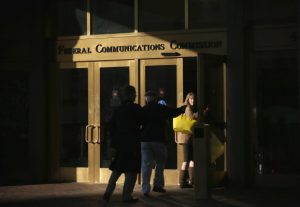The scene was organized chaos. Rows upon rows of artists displaying their latest work, engrossed in conversation with fans. Panels of podcasters and performers. So much cosplay. It was pretty much what you’d expect to see at a comic convention—but a whole lot gayer.
This is Flame Con, the world’s largest queer comic convention, a two-day affair with dozens of panels and hundreds of artists in the middle of Manhattan. I arrived not long after the convention center opened, and already there was a line around the corner of the hotel. As the day went on, the halls became more and more packed. I ran into several friends I didn’t know would be attending, reminding me just how small the queer community can be, even in a city as big as New York.
Though Flame Con may not have looked all that different from other cons, there was an undercurrent of joy that I hadn’t felt at similar events. I could tell others were feeling it too—this feeling of almost relief, letting go of the fear that often comes with being visibly queer.
Queerness and comics, in many ways, go hand in hand. There’s something about the escapism these stories about heroism and transformation can provide that resonates with queer people. Cosplay, I would argue, is almost inherently queer, especially as it was performed at Flame Con, with gender-bending and same-sex pairings of oft-shipped characters.
Justin J Wee captured some of the most breathtaking looks, from popular DC and Marvel heroes to more obscure characters, along with new twists on the classics. Many of those who were photographed participated in a cosplay contest on the main stage, where they proudly posing and, in some cases, cozied up to their partners. As Wee photographed these cosplayers throughout the day, folks lined up to be photographed, eager to be seen in the ensembles they had tenderly put together.
“It was a true spectrum of diversity that I was looking at, in a way I hadn’t seen before,” Wee says.
Growing up in China, Wee’s exposure to queerness was limited to what little he could find online. “A lot of the reason I’ve focused my work on documenting queer people is that I really wanted to create a reflection of the world I know exists and that I needed to see as a 14-year-old,” he adds.
I left Flame Con after spending several hours circling the convention center, talking to artists and attendees. My legs felt like lead and I couldn’t wait to lie down, but I felt energized in a way I couldn’t quite describe. It’s hard being trans sometimes, knowing that many people would rather I didn’t exist. It’s hard to find joy with the weight of everything happening in the world right now. Flame Con was a two-day retreat that allowed queer people like myself to choose joy. Sometimes, that’s all you need.



